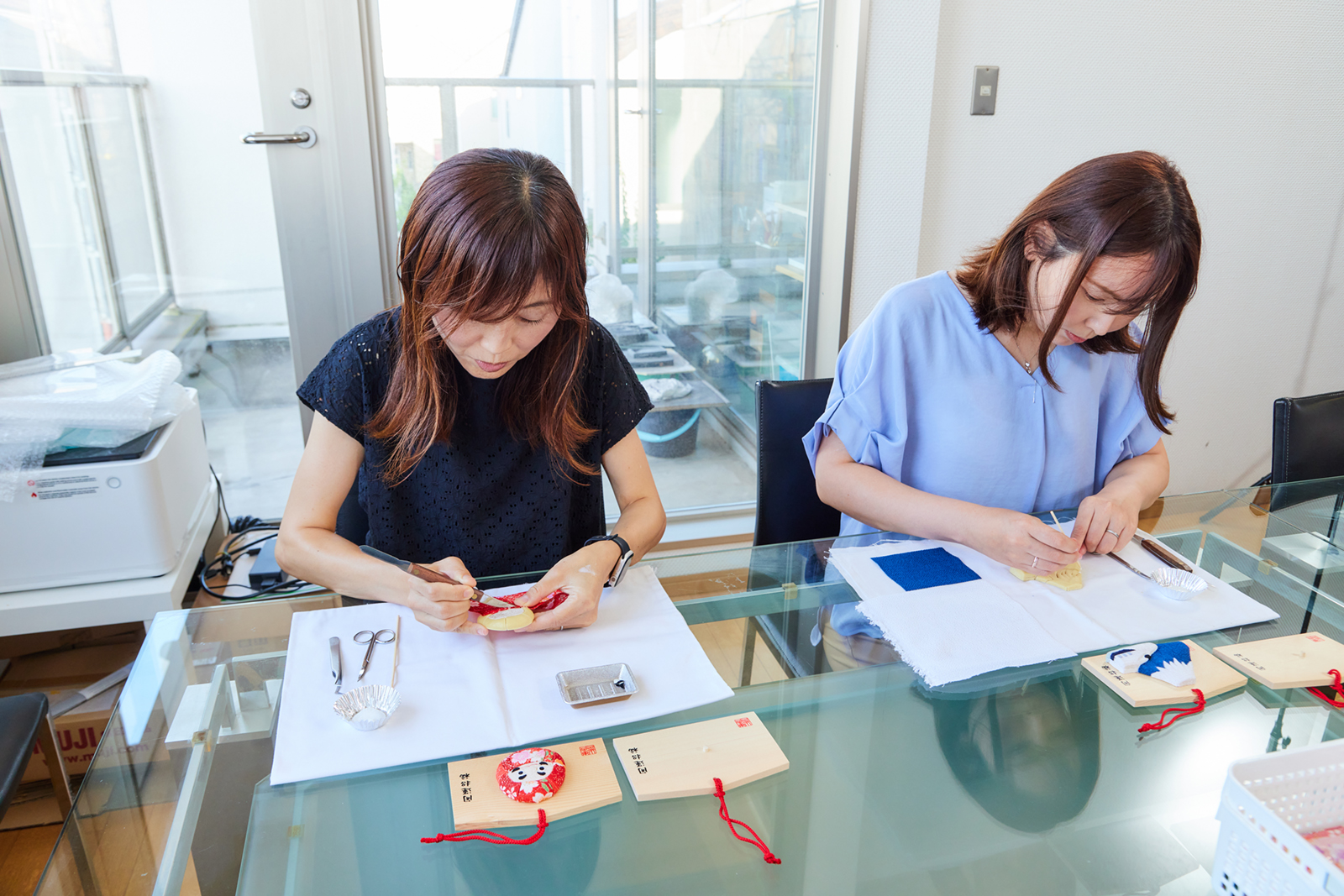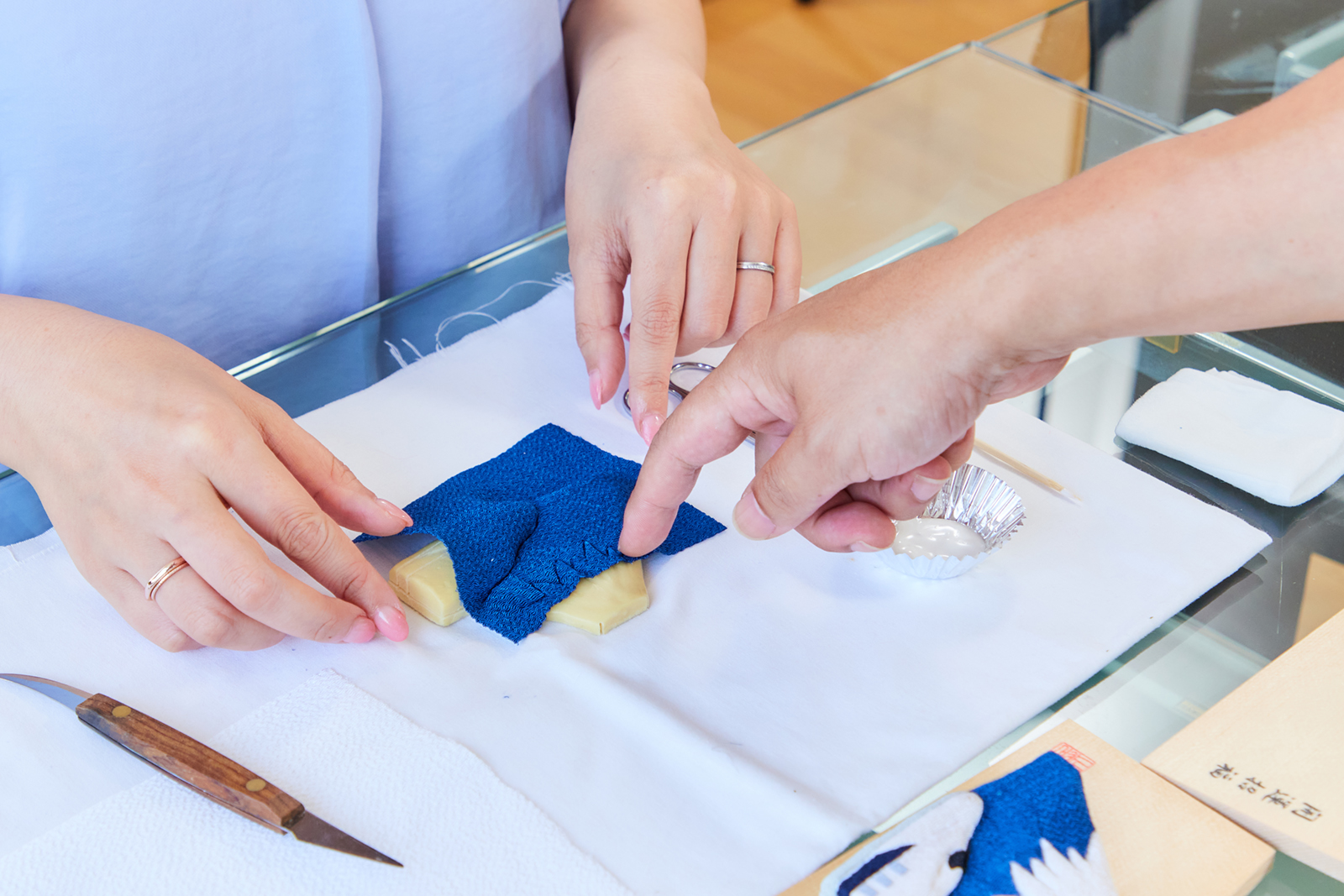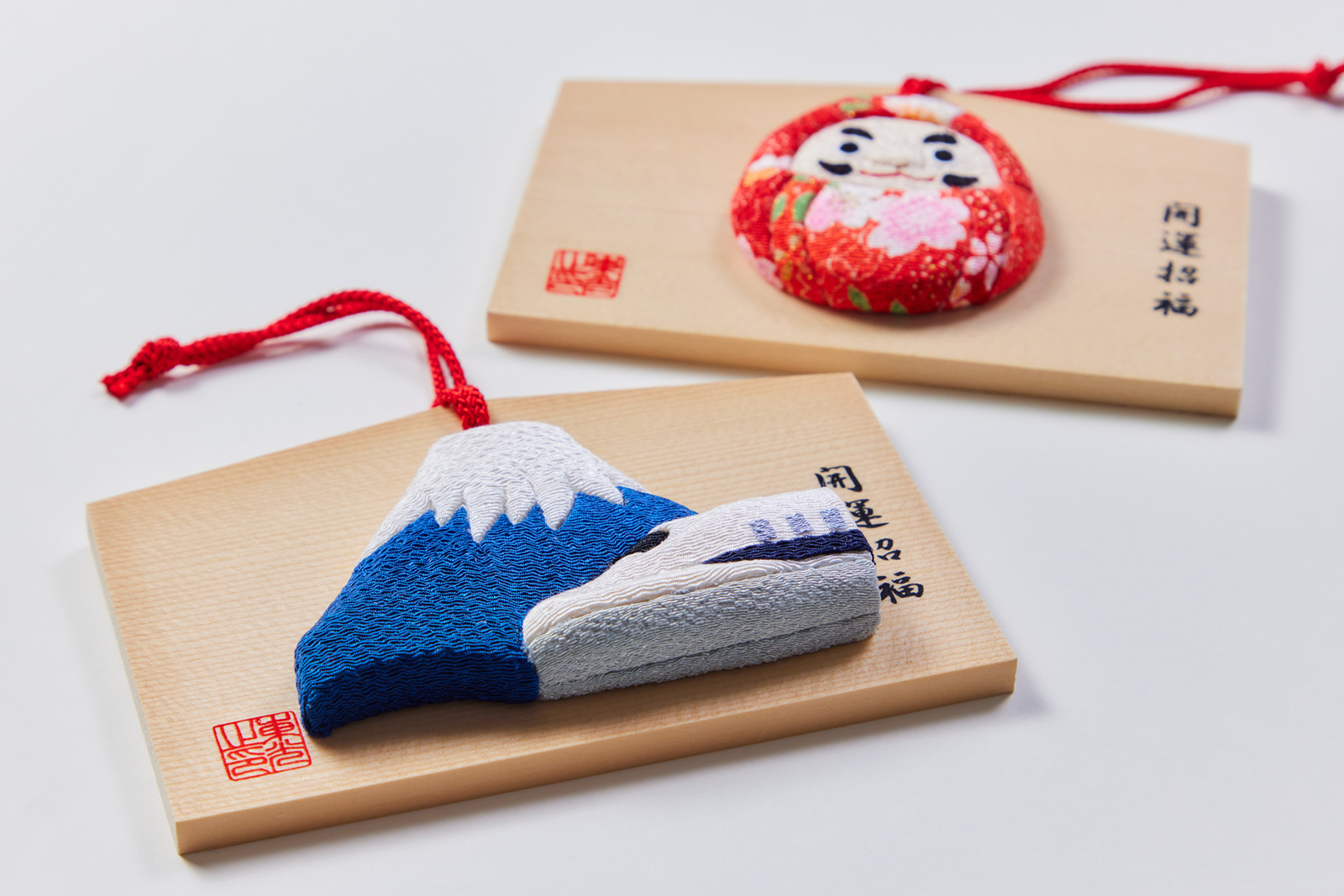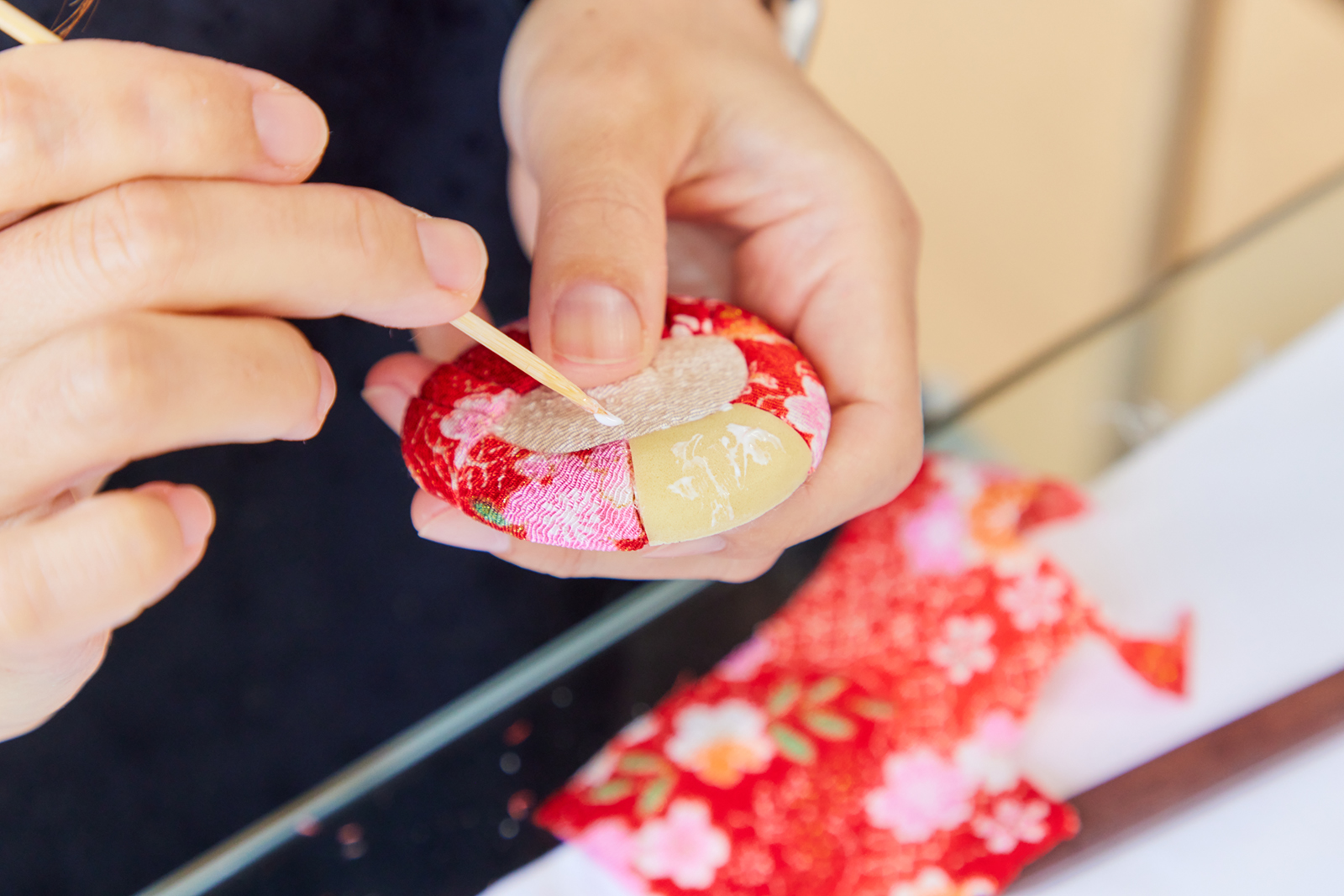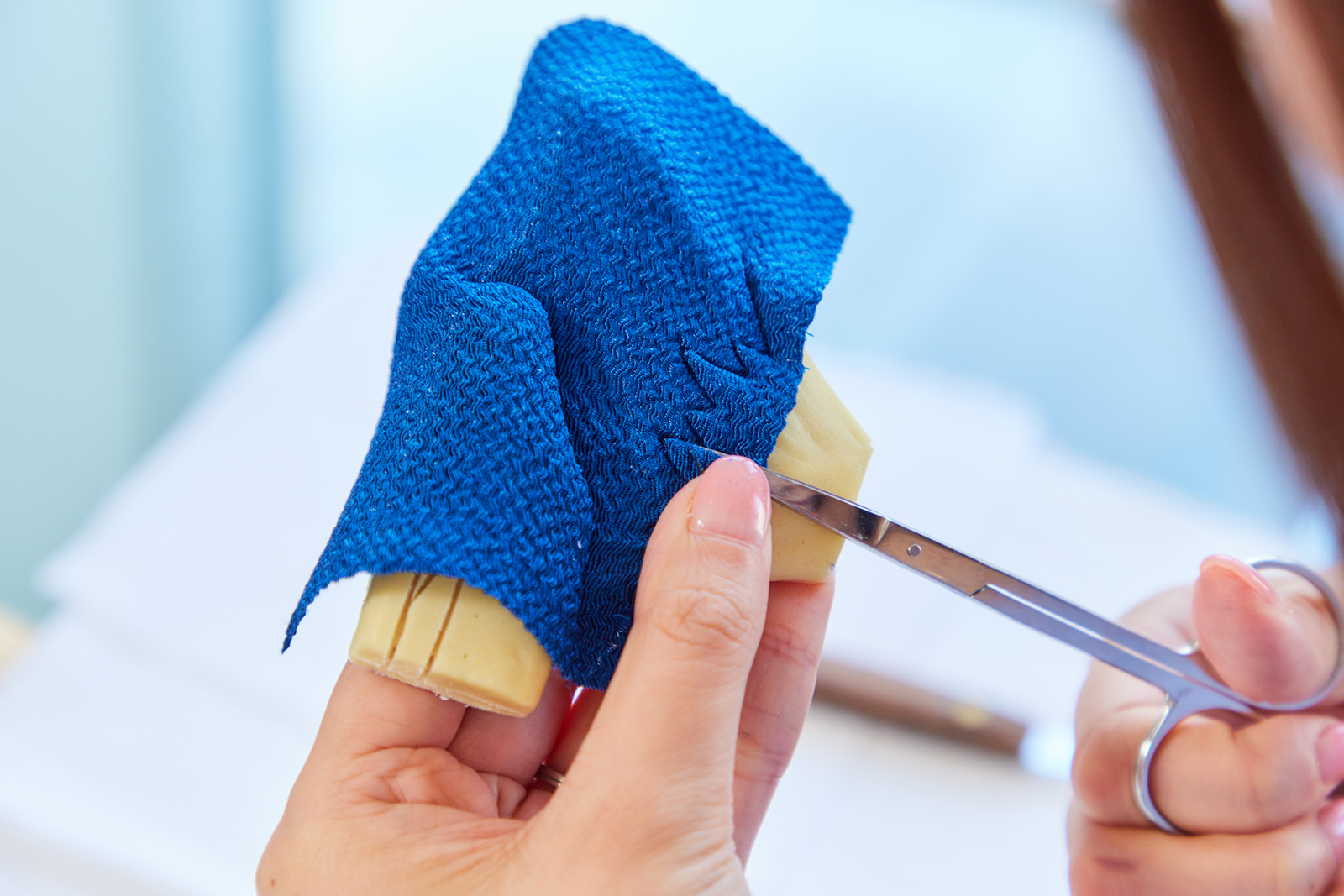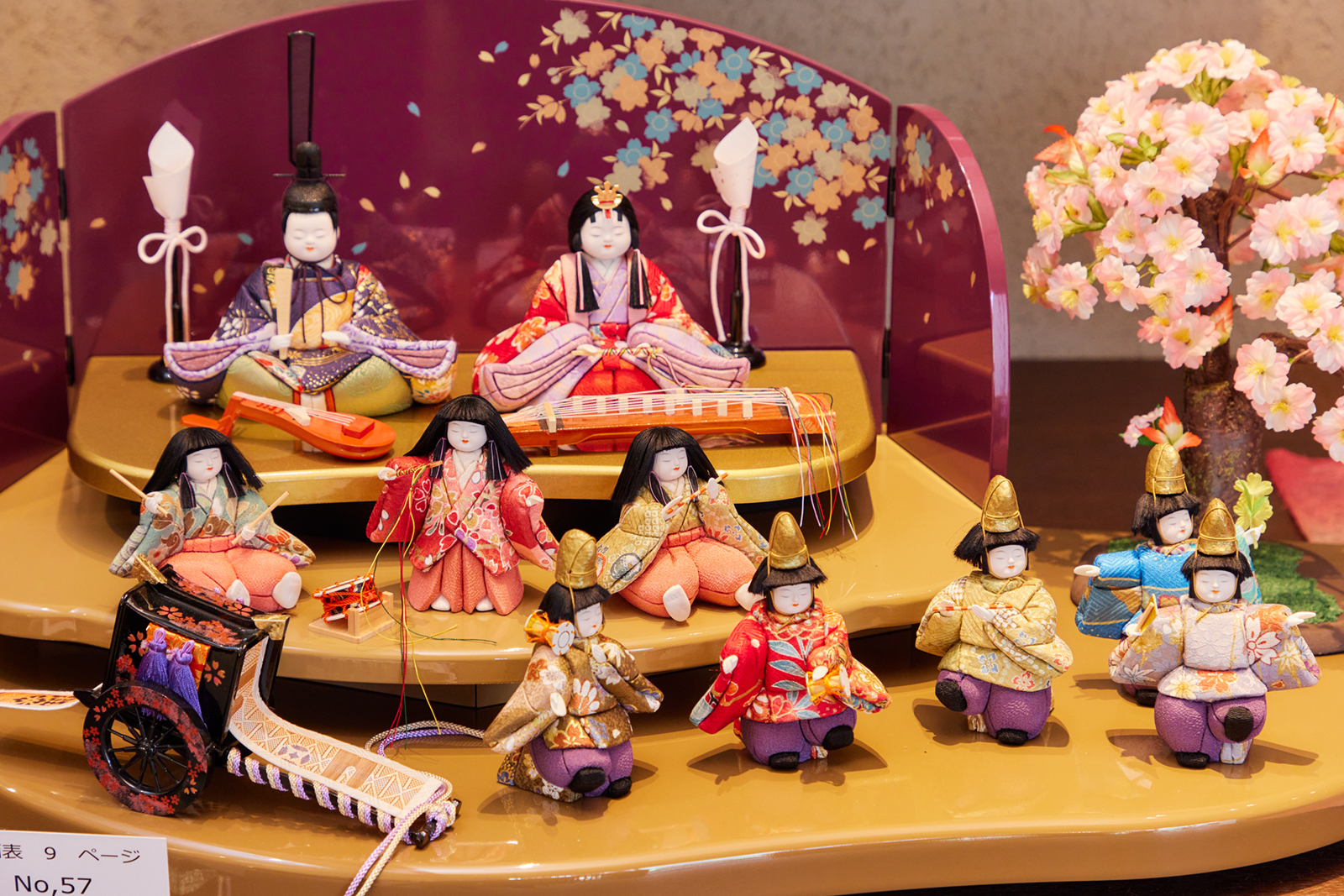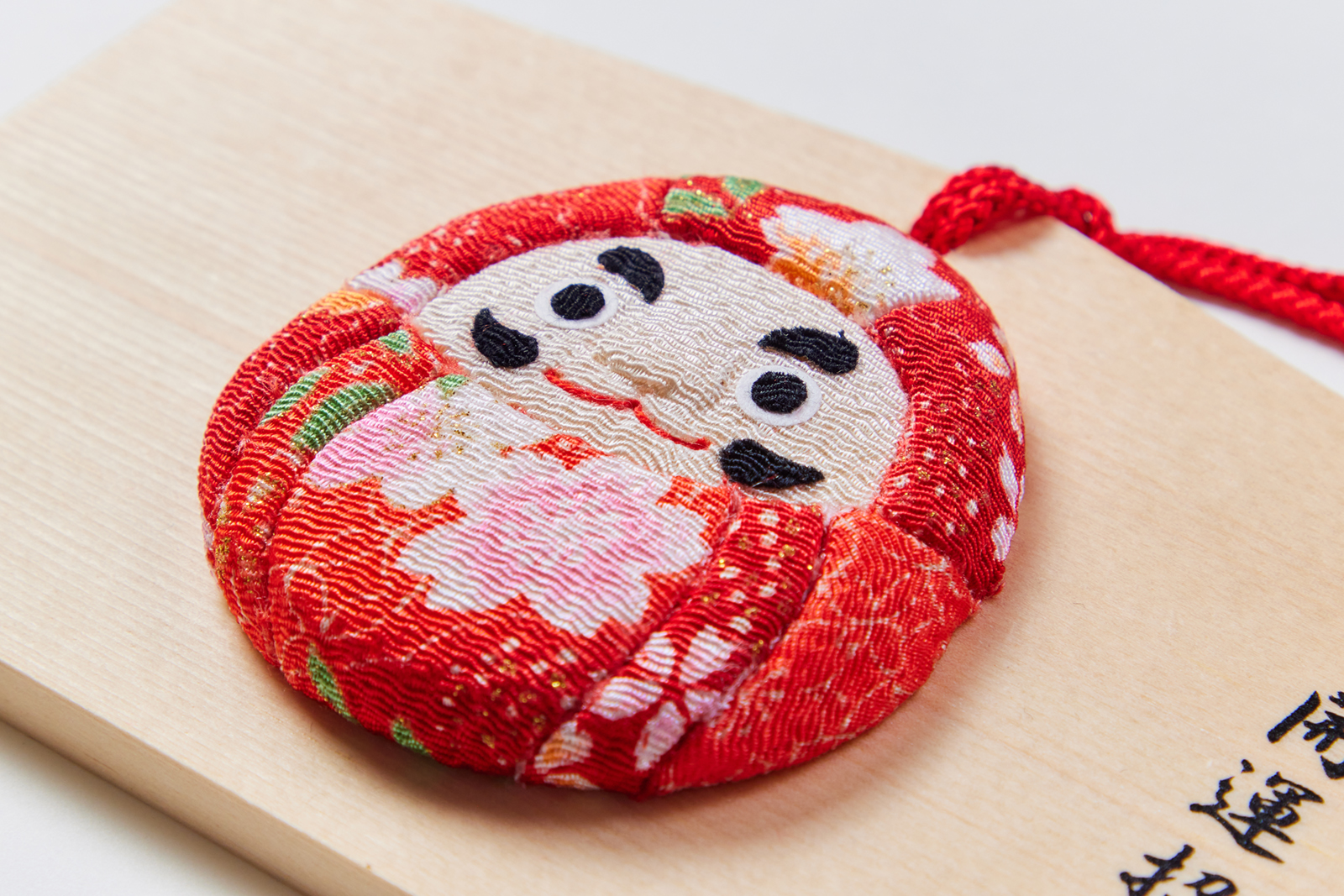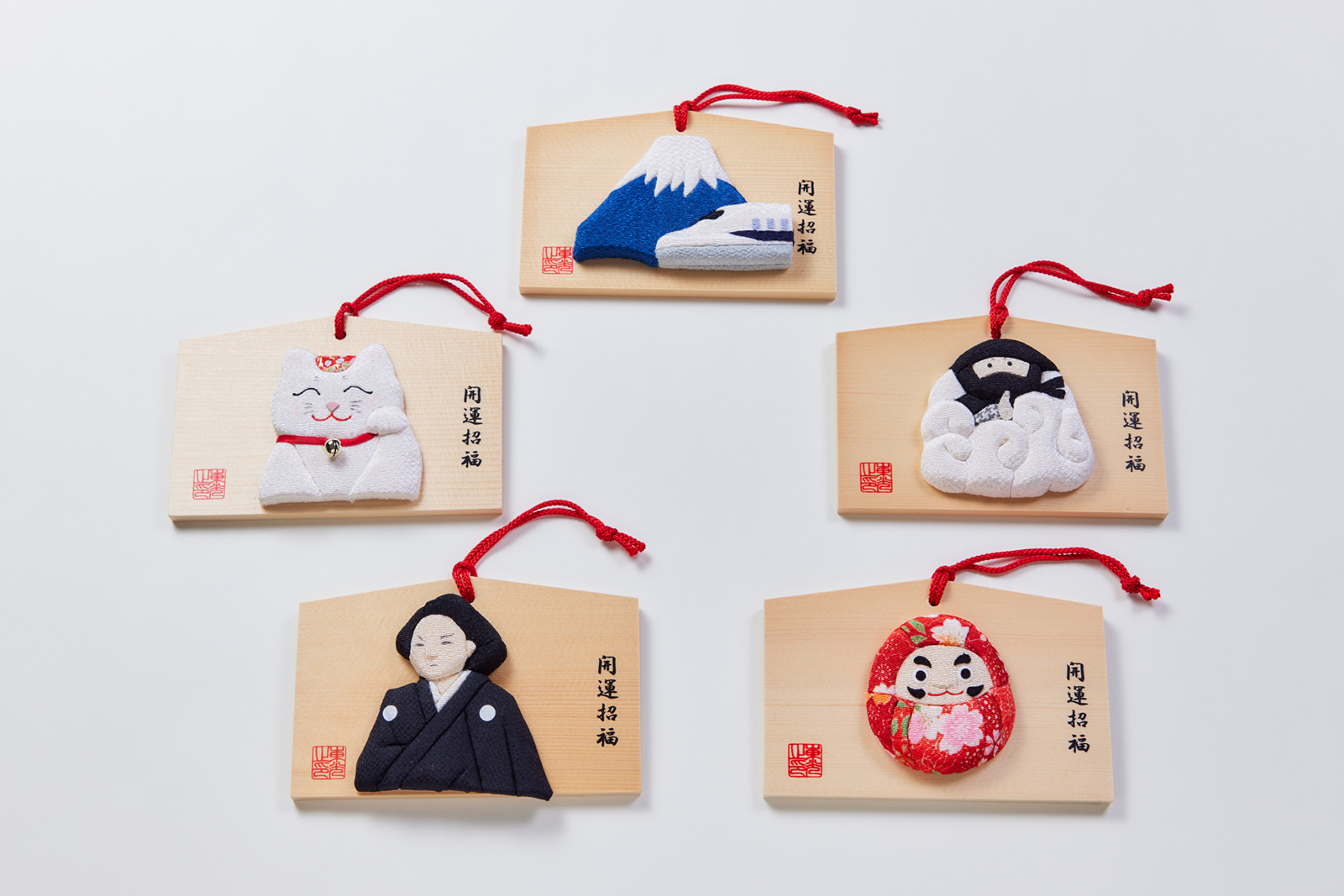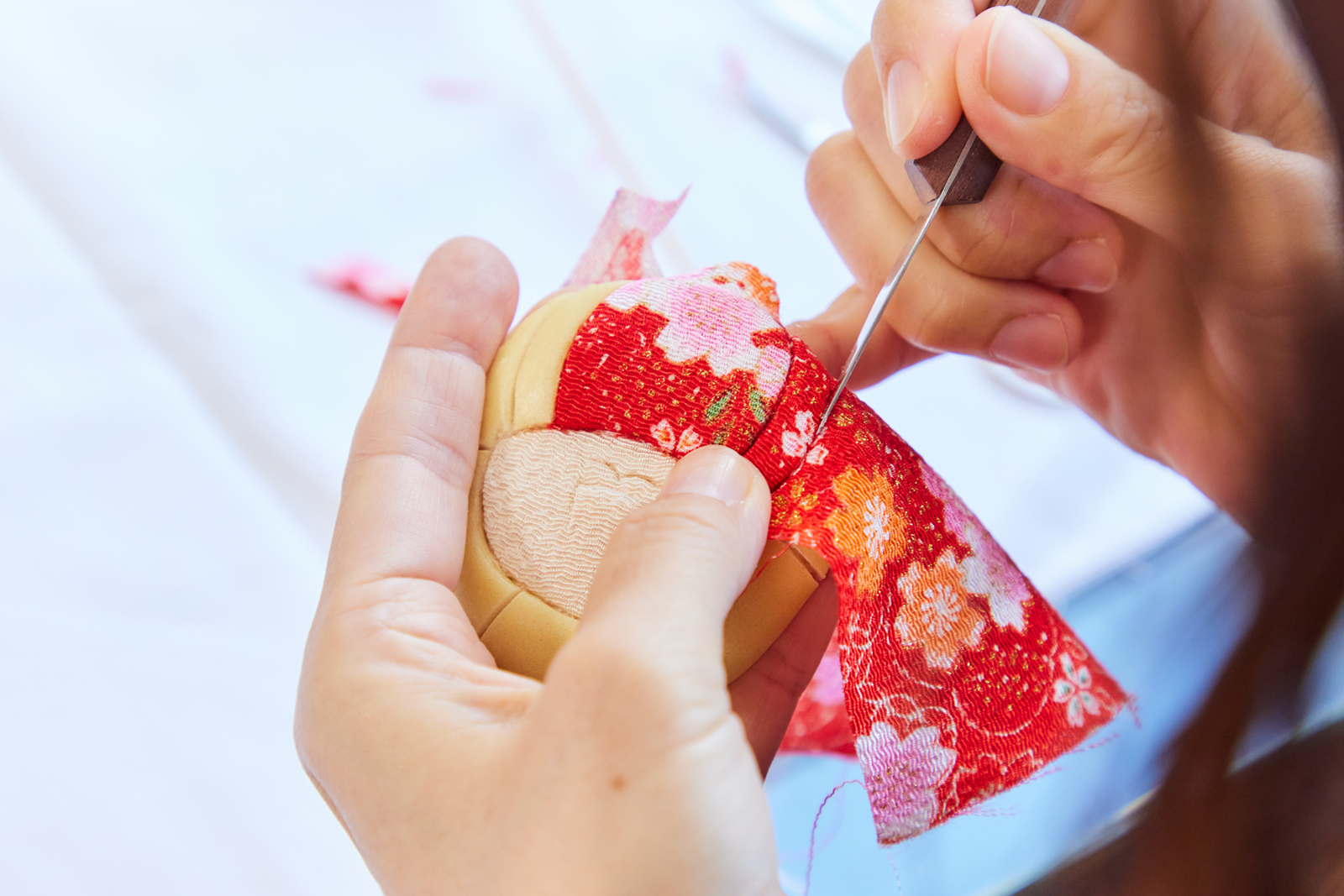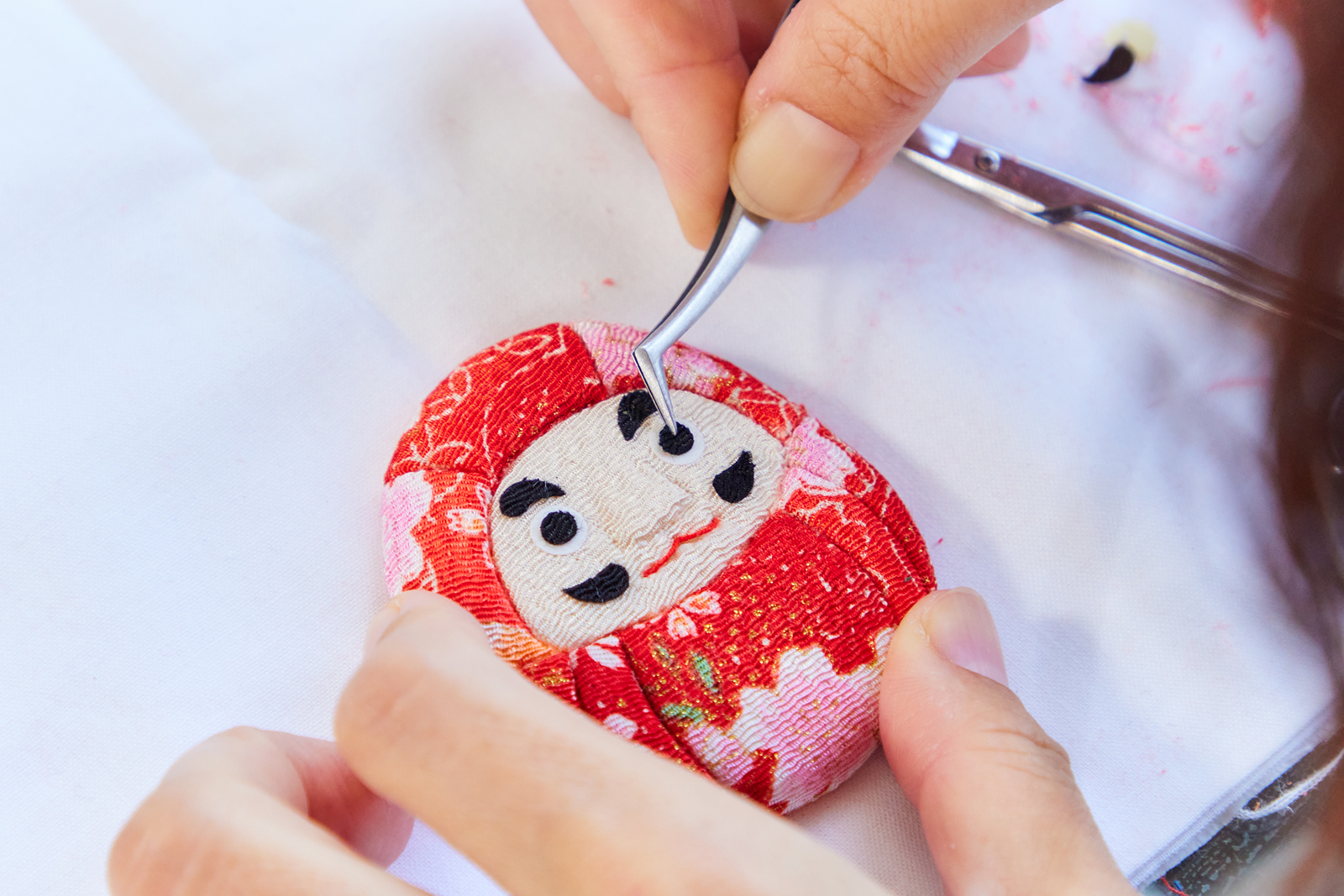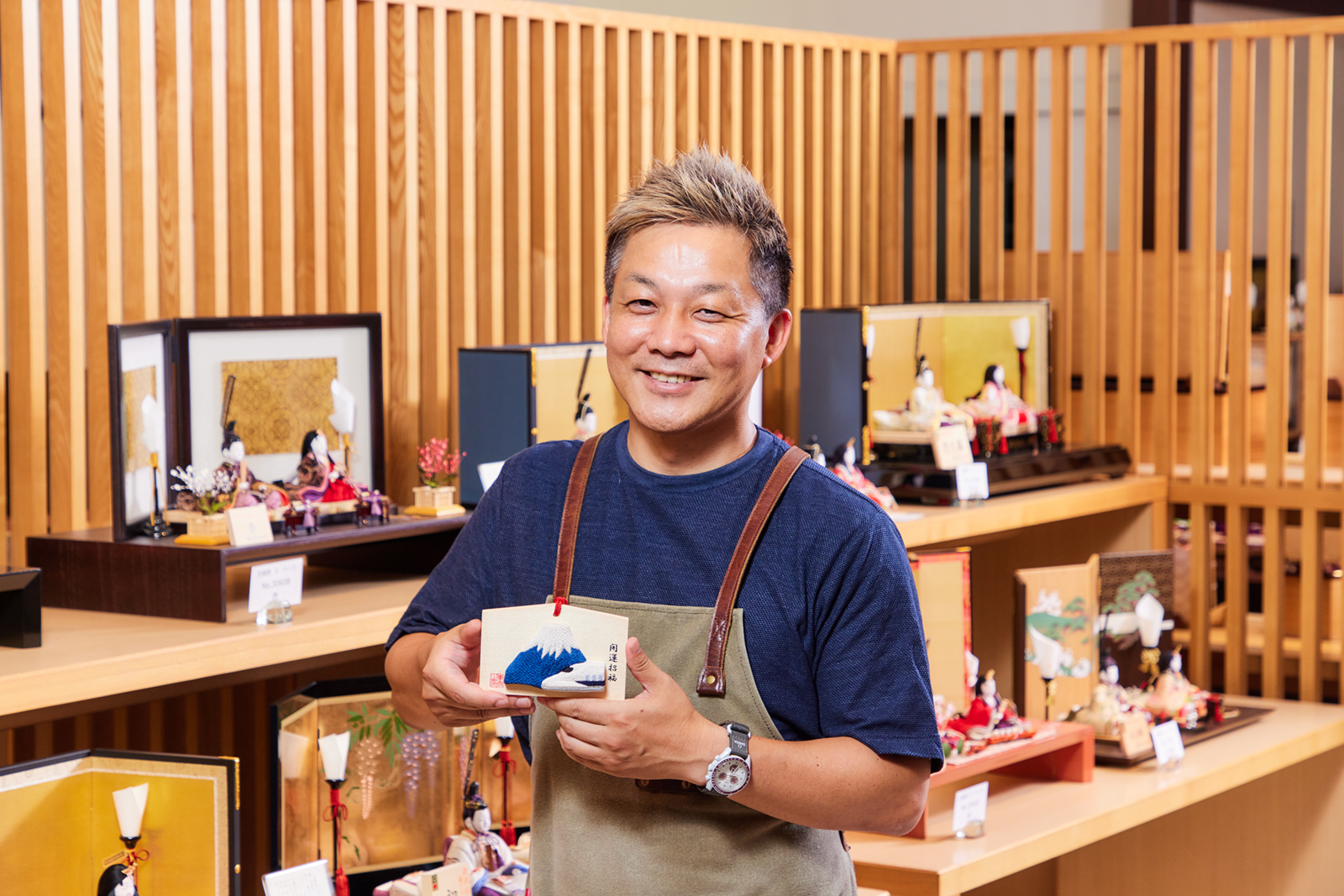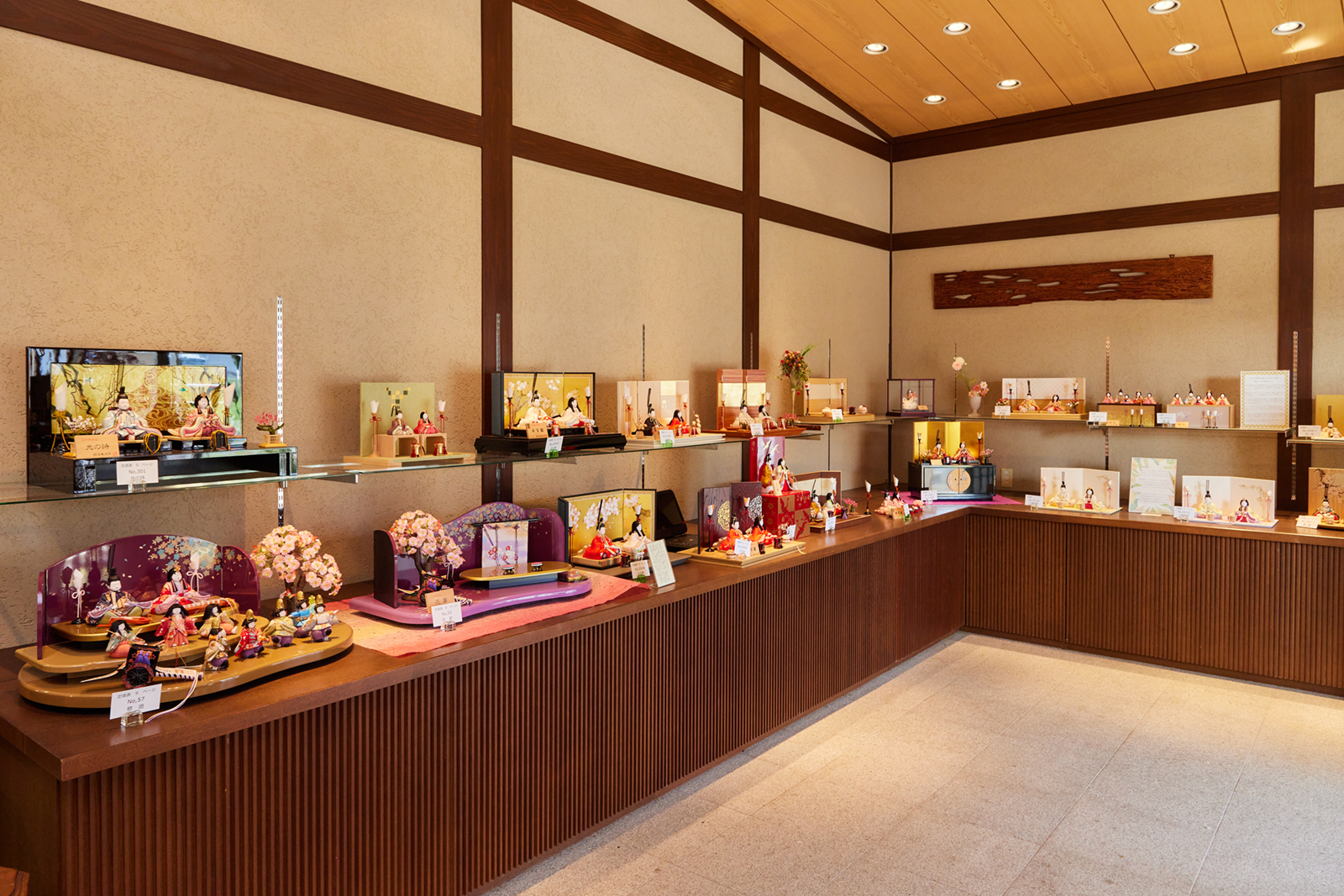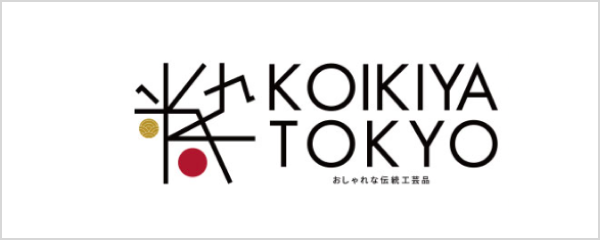Growing and innovating while preserving 70 years of tradition
The custom of decorating and admiring dolls is part of Japan's traditional culture, warding off negativity and acting as offerings to pray for longevity and health. Everyone from the aristocracy to common people have cherished Kimekomi dolls, and the tradition continues to this day.
The dolls were first created about 290 years ago. It is said they originated when Mr.Tadashige Takahashi began embedding scraps of cloth into small dolls at Kamigamo Shrine in Kyoto where he served. Originally called Kamo-Ningyo dolls after the shrine, they became popular throughout Kyoto before being brought to Tokyo by Mr. Eikichi Yoshino, a dollmaker, during the Meiji era (1868 - 1912). They later came to be called Kimekomi dolls and became loved throughout the city.
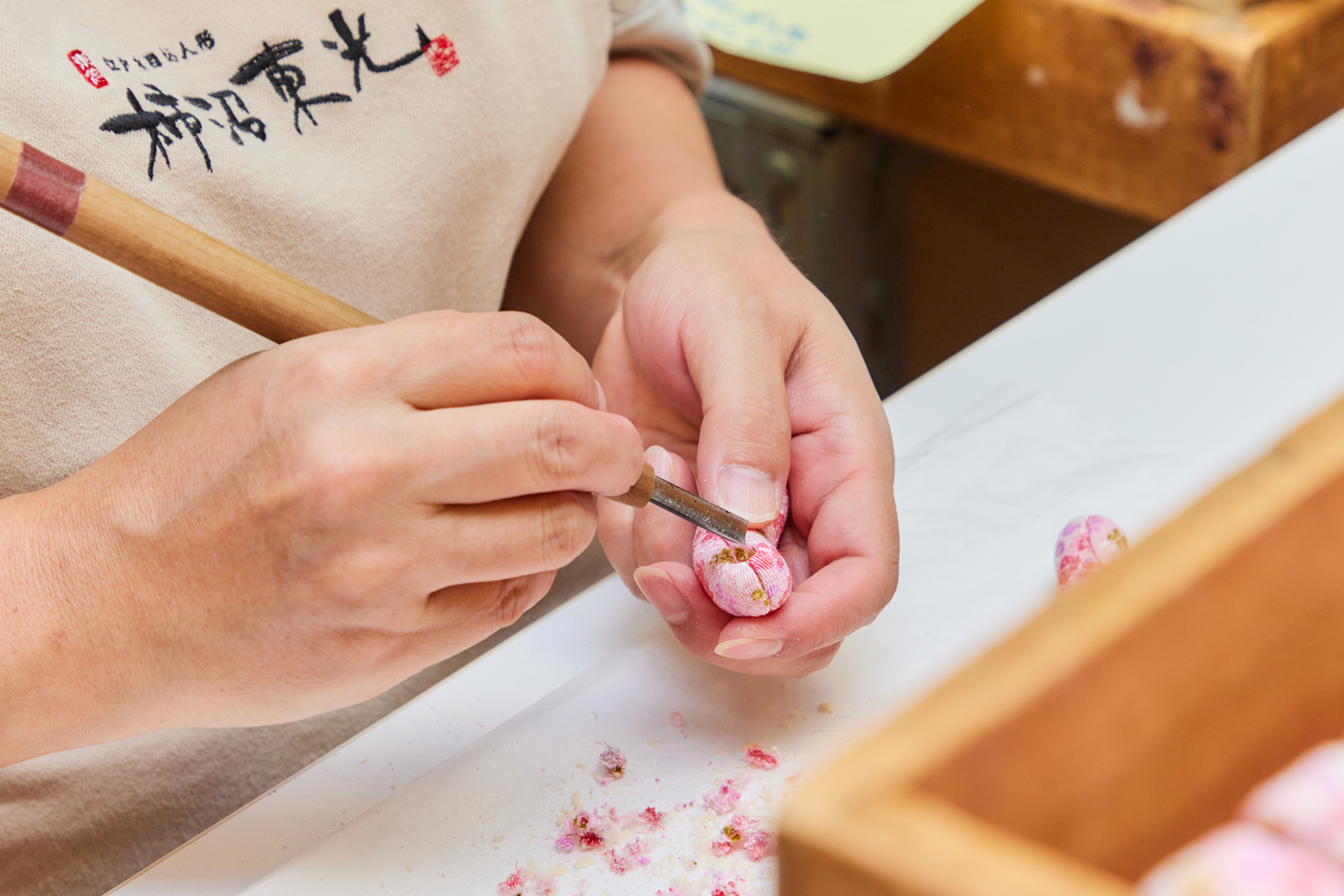
Kakinuma Ningyo was founded in 1950. It began with Mr. Toko Kakinuma, the first-generation artisan, who had trained under a master dollmaker, before establishing his own workshop in Arakawa-ku, Tokyo. He was based in Shioiri (now Minami-Senju), known for its high-quality Gofun chalk powder, but later relocated to what is now Koshigaya City in Saitama Prefecture. While preserving traditional techniques, the workshop’s doll making is also innovative, incorporating original methods such as mother-of-pearl inlay and layered two-tone coloring. With a desire to create dolls for people to enjoy not just during seasonal festivals, but also in everyday life, they continue to produce unique pieces that push the boundaries of the Kimekomi doll tradition. These include colorful Japanese Maneki-Neko (beckoning) cat dolls and collaborations with the producers of popular characters.
Experience making a Kimekomi Ema plaque with a quintessentially Japanese design
For this experience, you will get to try making a Kimekomi Ema plaque that incorporates a small wooden figurine. After listening to a talk about the history of Kimekomi dolls and their meaning, you’ll tour of the studio where the artisans work. There you’ll observe the process of inserting cloth one piece at a time into the bodies of the pieces they work on. These are made of Toso, a mixture of powdered paulownia wood and paste.
Then, you get to choose which Ema you’ll craft during the experience from the samples provided. There are five figurines you can choose from: Mount Fuji with a Shinkansen, Maneki-Neko cat, Daruma, Ninja, and Sakamoto Ryoma. The raised figure seems almost as if it’s emerging from the Ema plaque. Choose your favorite one from this selection of quintessential motifs from Japanese culture.
One piece of cloth at a time, before you know it, you’ll find yourself absorbed in your work
The mold for the doll you’ll use during the experience already has the necessary grooves cut into it. First you’ll spread a thin layer of glue over the area to be covered with cloth and with a bamboo skewer fill in the grooves. Then it’s time to start the Kimekomi process. Placing the cloth along the groove, you press it in with a small metal spatula. While inserting it in slowly and carefully, the glue will dry out as time passes. So try doing it with speed and precision, it’s your time to shine! The cloth slides in smoothly, so there’s no need to force it. We recommend you work rhythmically and quickly.
Once you have finished attaching one section, use scissors to cut off the excess cloth. Then you’ll spread glue on the next area and repeat this process. Portions of the figurine with intricate grooves or where the cloth needs to be cut thin may require special attention. While referring to the artisan’s model, and with a little help if needed, you’ll carefully complete each step until the plain, light brown figure you started with gradually becomes a colorful piece.
Once the various colors and shapes of cloth have been pressed into place, decorative bits of cloth for human eyes or Shinkansen windows will complete your work. The whole process from start to finish takes about an hour. Time will fly as you focus on the Kimekomi process, and you’ll surely to find engaging with the artisans' intricate craftsmanship a rewarding experience.
Spreading the joy of doll making
Even many Japanese people don’t realize how much time and effort goes into making Japanese dolls. Mr. Toshimitsu Kakinuma, a managing director, says, “If people find joy in crafting these Kimekomi dolls, I hope they’ll help spread that feeling to many others.”
Come immerse yourself in an experience where time slips away as you understand the dedication of the doll makers engaged in their crafts.
In 1950, founded a business manufacturing and selling Edo Kimekomi dolls in Arakawa-ku, Tokyo. With the expansion of the business, in 1982 the company established its current workshop in Koshigaya City, Saitama Prefecture. While carrying on the traditional techniques of Kimekomi doll making, the company also pursues its own distinctive methods, like mother-of-pearl inlay and layered two-tone coloring. More recently, in addition to seasonal festival dolls, the company has been working on items to go with everyday life, such as a Feng Shui (Chinese geomancy)-inspired series featuring Maneki-Neko (Japanese Beckoning) cats, the “When You Wish Upon a Star” series, and collaborative works of popular characters.
